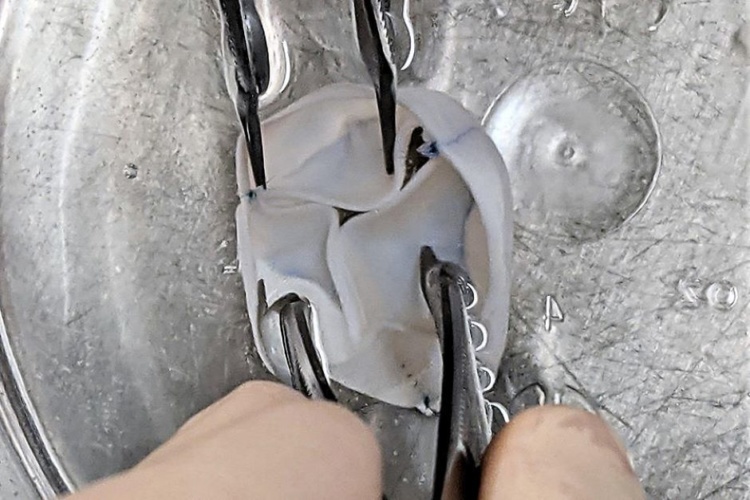
The valves, developed in a study led by University of Minnesota Twin Cities researchers, also showed reduced calcification and improved blood flow function compared to animal-derived valves currently used when tested in the same growing lamb model.
Tria heart valve shows potential of polymer in heart surgery
Bioengineered heart ventricle has potential for therapy studies
If confirmed in humans, these new heart valves could prevent the need for repeated valve replacement surgeries in thousands of children born each year with congenital heart defects. The valves can also be stored for at least six months, providing surgeons with an ‘off the shelf’ option for treatment.
The study has been published in Science Translational Medicine and the valve-making procedure has been patented and licensed to Vascudyne, Inc. a University of Minnesota start-up.
"This is a huge step forward in paediatric heart research," said Robert Tranquillo, the senior researcher on the study and a University of Minnesota professor in the Departments of Biomedical Engineering and the Department of Chemical Engineering and Materials Science. "This is the first demonstration that a valve implanted into a large animal model, in our case a lamb, can grow with the animal into adulthood. We have a way to go yet, but this puts us much farther down the path to future clinical trials in children."
To date, the only accepted options for children with heart defects are valves made from chemically treated animal tissues that can become dysfunctional due to calcification and require replacement because they do not grow with the child. According to the University, these children will often need to endure up to five or more open heart surgeries until a mechanical valve is implanted in adulthood.
In this study, Tranquillo and his colleagues used a hybrid of tissue engineering and regenerative medicine to create the growing heart valves. Over an eight-week period, they are said to have used a specialised tissue engineering technique they previously developed to generate vessel-like tubes in the lab from a post-natal donor's skin cells. To develop the tubes, researchers combined the donor sheep skin cells in fibrin in tubular form. They then provided nutrients necessary for cell growth using a bioreactor.
The researchers used special detergents to wash away the sheep cells from the tissue-like tubes, leaving behind a cell-free collagenous matrix that does not cause immune reaction when implanted.
The next step was to sew three tubes (about 16mm in diameter) together into a closed ring before trimming them slightly to create leaflets that replicate a structure like a heart valve about 19mm in diameter.
"After these initial steps, it looked like a heart valve, but the question then became if it could work like a heart valve and if it could grow," Tranquillo said in a statement. "Our findings confirmed both."
These second-generation tri-tube valves were implanted into the pulmonary artery of three lambs. After 52 weeks, the valve regenerated as its matrix became populated by cells from the recipient lamb, and the diameter increased from 19mm to a physiologically normal valve about 25mm. The researchers also saw a 17 to 34 per cent increase in the length of the valve leaflets as measured from ultrasound images. In addition, researchers showed that the tri-tube valves worked better than current animal-derived valves with almost none of the calcification or blood clotting that the other valves showed after being implanted in lambs of the same age.
Tranquillo said the next steps are to implant the tri-tube valve directly into the right ventricle of the heart to emulate the most common surgical repair and then seek US Food and Drug Administration approval for human clinical trials.




Nanogenerator consumes CO2 to generate electricity
Whoopee, they've solved how to keep a light on but not a lot else.